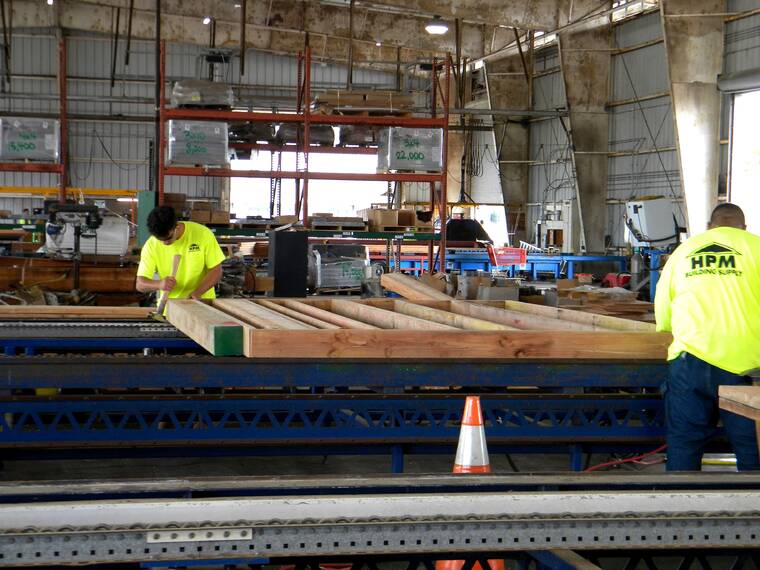More than two years after the County Council passed building code revisions increasing bureaucratic hurdles for locally constructed factory-built housing, a project that would have mass-produced such housing has stalled, as the county Building Division works to streamline a process that regulates the new requirements.
The new restrictions requiring HPM Building Supply, currently the island’s only producer of such housing, to obtain building permits both in the factory and later on the ground, squeaked through the council on a 5-4 vote after robust lobbying from carpenters’ unions and some council members’ concerns about safety.
A spokeswoman for the Department of Public Works, responding to West Hawaii Today’s questions to Building Division heads, said refining the process is still in the works.
“Factory-built home permits are being processed, along with all new residential construction permits. The Department of Public Works is still refining the factory-built home approval processes,” said spokeswoman Sherise Kanae-Kane.
The factory homes, envisioned as an affordable alternative to provide much-needed resident housing on the island, are built using plans approved by the county Building Division. Building, electrical and plumbing permits are required and the house is inspected once it is moved to the building lot and connected to utilities. Factory-built housing has been in the building code since 2012 with few such homes being constructed.
But plans by HPM Building Supply to make greater use of the structures, using non-union workers in an assembly-line operation at the company’s Keaau plant to help increase the island’s affordable housing inventory, raised concerns and inspired the new restrictions.
The county is working with HPM to create a process to handle the building permit issues, Darryl Oliveira, director of risk management for HPM, said Thursday.
“We’re working closely with Mayor (Mitch) Roth and his people on the process,” Oliveira said. “They’ve been very cooperative and supportive. We feel for them as they’ve gone though a lot of challenges.”
It’s difficult to mass produce housing in an environment where building permits take a certain amount of time, he said.
“Until there’s a process that would allow a faster turnaround, in order to move as a true assembly line, it’s very difficult to make them,” he said.
Kanae-Kane described the various steps permit applications must take through different agencies.
“Once approvals from the other Departments are completed, the Building Division will have six days to inform the applicant of approval or note deficiencies. If approved, the Building Division will issue the permit,” she said.
The factory has been used to create 12 modular units for HOPE Service’s Sacred Heart Affordable Housing Project, offering permanent affordable housing and supportive services for seniors experiencing homelessness. Located in Pahoa, the housing project was funded with donations.
Oliveira said the factory may soon be put to work creating portable classrooms for local charter schools and housing for the Big Island Substance Abuse Council.
He added there’s a lot of interest in buying factory-built housing, but until the company is confident it can turn them out quickly, it’s hesitated to engage in marketing campaigns.
“We don’t want to over-promise and under-deliver,” he said.
“We are committed to this project and we feel it’s an option for affordable housing for the community,” Oliveira added. “It will provide people with another alternative and hopefully put housing within the reach of many people.”
Email Nancy Cook Lauer at ncook-lauer@westhawaiitoday.com.



